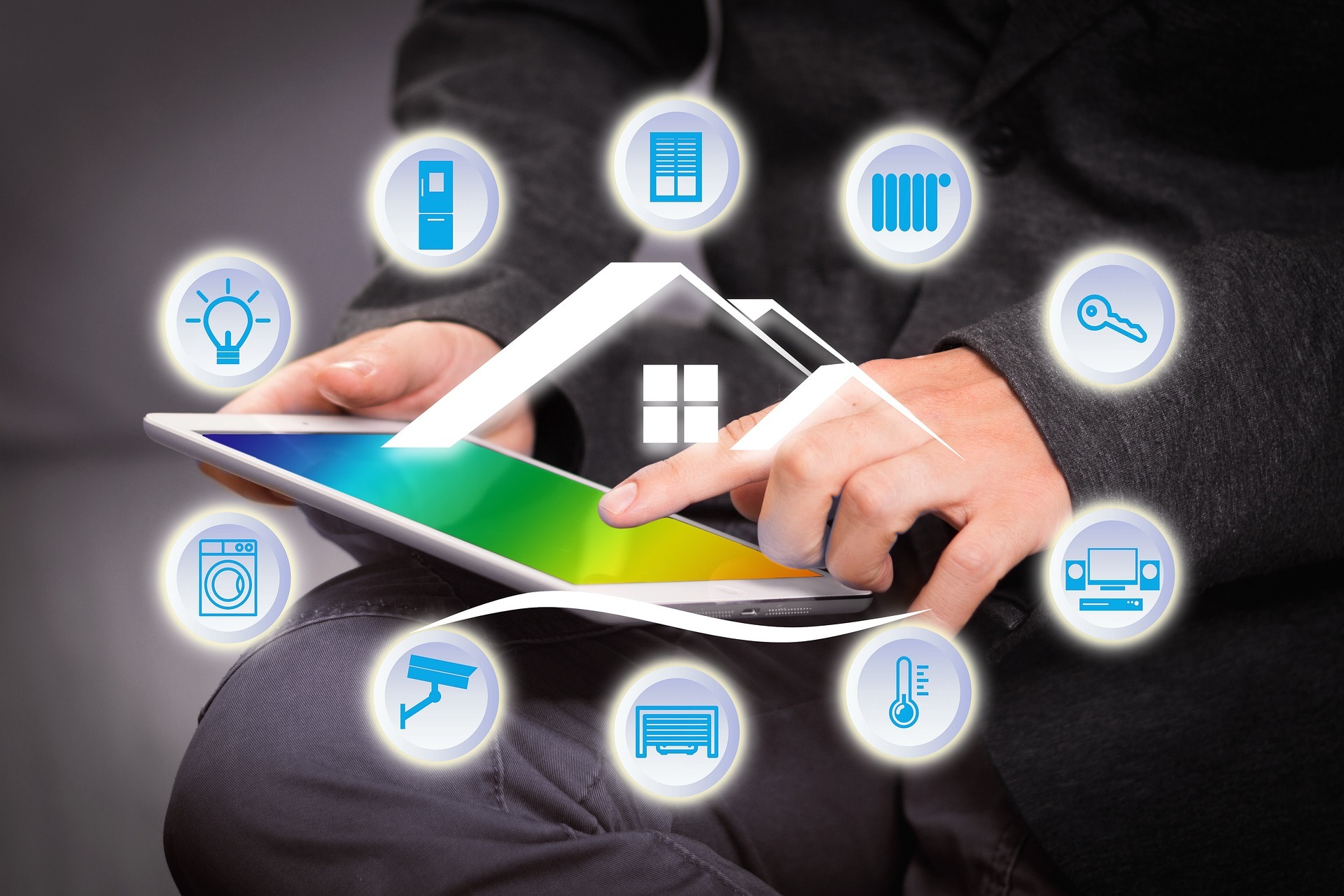What Is Home Automation and Smart Living — and How Does It Work?
A smart home—also known as a connected home or intelligent home—refers to a residence equipped with smart home technology that allows for remote access, automation, and centralized control of household devices. These may include smart lighting, smart thermostats, smart security systems, voice assistants, and more.Home automation and smart living are revolutionizing the way modern households function. From voice-controlled lighting to intelligent climate systems, these smart technologies offer convenience, security, and energy efficiency like never before.
Smart home automation works through a home control hub or a smartphone app that connects devices via Wi-Fi, Bluetooth, or the Internet of Things (IoT). Through this centralized system, homeowners can use voice commands, app-based control, or scheduled automation to manage their environment.
Whether you’re activating your smart speakers, adjusting the temperature control using a learning thermostat, or accessing your security cameras from miles away, the ultimate goal is convenience, efficiency, and security.
Top Benefits of Home Automation and Smart Living for U.S. Homeowners
American homeowners are increasingly adopting smart home systems for the numerous advantages they offer. Let’s break down the key benefits:
- Convenience: Manage lights, climate, appliances, and security from your smartphone.
- Energy-Efficient Home: Automated schedules and smart sensors reduce energy waste.
- Enhanced Security: From smart locks to motion detection, safety is elevated.
- Accessibility: Ideal for older adults and people with disabilities through voice control and automated routines.
- Time Savings: Let a robotic vacuum clean your home while you relax.
- Increased Property Value: Homes with automation are in higher demand in the real estate market.
Smart Lighting in Home Automation and Smart Living
Smart Thermostats and Climate Control in Smart Living Environments:
- Occupancy-Based Adjustments
- Learning Thermostats that analyze your routines
- Temperature Control via mobile app or voice
- Energy Reports to optimize savings
By adjusting the HVAC system based on real-time conditions, homeowners can achieve eco-friendly home technology that lowers costs and boosts comfort.
Energy Efficiency and Cost Savings Through Home Automation
Beyond comfort and security, automated home systems significantly reduce monthly expenses. Here’s how:
- Energy Monitoring tools identify high-usage appliances
- Smart Lighting dims or turns off when not needed
- Smart Appliances optimize operation time
- Automated Energy Savings through personalized schedules
The long-term ROI of a smart house includes reduced electricity, heating, and cooling costs—making it a sustainable investment.
Learn More: 👉 https://www.energy.gov/energysaver/smart-home-technologies
Voice Control Integration in Home Automation and Smart Living
The magic of smart living often starts with voice assistants like:
- Amazon Alexa
- Google Assistant
- Apple Siri / HomeKit
These systems allow hands-free control over your entire smart home ecosystem, from adjusting lighting and music to managing home security or EV charging.
Voice control eliminates complexity and boosts accessibility, especially for older adults and people with disabilities.
Smart Appliances That Make Everyday Living Easier
From smart refrigerators that alert you when you’re out of milk to ovens you can preheat remotely, smart kitchen appliances are changing meal prep forever.
Popular categories include:
- Wi-Fi enabled ovens & ranges
- Voice-controlled coffee makers
- Smart dishwashers & laundry machines
- Touchscreen refrigerators with inventory tracking
These innovations offer mobile app control, automation schedules, and energy-saving modes.
Home Entertainment Systems and Smart Streaming Devices
Smart home technology extends into entertainment with systems that bring theater-level experience into your home.
Features include:
- Multi-room audio via Sonos or Bose
- Smart TVs with app control
- Streaming hubs like Roku, Chromecast, or Fire TV
- Custom lighting scenes that adjust for movie nights
Control it all from your smartphone or use voice command for effortless entertainment.
How to Get Started with Home Automation on a Budget
Smart home setup doesn’t have to be expensive. Begin with:
- Smart bulbs ($10–$25 each)
- Smart plugs ($15–$30)
- Smart speaker/hub (Amazon Echo or Google Nest)
- Budget smart thermostat
Use free or low-cost apps for automation schedules and slowly expand your home automation system.
DIY Smart Home Setup vs. Professional Installation: What’s Better?
DIY Installation is perfect for beginners:
- Easy plug-and-play devices
- Lower upfront costs
- Full customization
Professional Setup is ideal for:
- Large homes
- Complex automation
- Integrated security and AV systems
Choose based on your smart home expansion plans and technical confidence.
Smart Home Platforms: Choosing Between Google Home, Alexa, Apple HomeKit, and More
Your smart home compatibility depends on choosing the right platform:
- Alexa: Largest third-party support, budget-friendly
- Google Home: Excellent search integration, intuitive routines
- Apple HomeKit: Best for iOS users, top-notch privacy
Consider device interoperability before making major purchases.
Building a Future-Proof Smart Home: Scalability and Compatibility Tips
A future-proof smart house ensures long-term success. Here’s how:
- Buy devices with open protocols (Zigbee, Z-Wave)
- Use Wi-Fi 6 routers for better bandwidth
- Stick to one home control hub
- Choose brands with long-term support
This prevents compatibility issues and protects your investment as technology evolves.
Home Automation for Apartments, Condos, and Small Spaces
Renters and condo dwellers can still enjoy smart living by focusing on:
- Portable devices (plugs, bulbs, voice assistants)
- Wireless systems (no hardwiring needed)
- Compact smart appliances
Choose solutions that don’t require structural changes and are easily removable.
How Smart Homes Help You Save on Utility Bills
With smart home integration, utility savings become effortless:
- Energy-efficient home lighting reduces electricity usage
- Smart thermostats save 10–23% on HVAC costs
- Leak detectors prevent water damage and excess usage
- Usage reports show where to cut back
Combined, these changes lead to substantial monthly savings and support eco-friendly living.
EV Charging at Home: Smarter Car Charging Options for 2025
As electric vehicles (EVs) grow in popularity, home-based smart EV chargers are a must.
Top features:
- Scheduled charging during off-peak hours
- App alerts and remote monitoring
- Solar integration
- Smart load balancing
Brands like Tesla Wall Connector, ChargePoint Home Flex, and JuiceBox dominate the U.S. market.
Under-Cabinet and Ambient Smart Lighting Ideas
Under-cabinet smart lighting adds elegance and efficiency in kitchens and bathrooms.
Ideas include:
- LED light strips with app control
- Motion-activated ambient lighting
- Dimmable task lighting
- Color-changing bulbs for mood enhancement
These enhancements combine functionality with modern design.
Control4 vs. Other Home Automation Brands: Which One Is Right for You?
Control4 is a premium system offering:
- Total home automation
- Centralized control hub
- Professional installation only
Alternatives:
- Vivint (full security focus)
- Samsung SmartThings (DIY-friendly)
- Home Assistant (open-source, custom)
Choose based on budget, tech level, and need for support.
Top Smart Devices to Transform Your Home in 2025
Here’s a curated list of must-have smart home devices for 2025:
- Nest Learning Thermostat
- Ring Video Doorbell Pro 2
- Lutron Caséta Smart Light Switches
- Roborock S8 MaxV Ultra Vacuum
- Echo Show 10 (3rd Gen)
- Samsung SmartThings Hub
- GE Smart Appliances
- ChargePoint Home Flex Charger
All of these contribute to a truly automated home experience.
Learn More: 👉 https://www.consumerreports.org/electronics-computers/smart-home/
Future Trends in Home Automation and Smart Living
As we look ahead, smart homes will become even more intelligent and automated. Expect:
- AI-driven routines that learn user habits
- Voice-first interfaces
- Greater energy independence via solar and battery integration
- Privacy-first devices with encrypted storage
- Increased focus on accessibility and elder care
The future of home technology is not just smarter—it’s more human-centric, personalized, and sustainable.
Final Thoughts
Home automation and smart living aren’t just futuristic concepts—they’re the present reality. With careful planning, the right smart home devices, and voice control integration, you can build a system that saves energy, improves safety, and enhances quality of life.
Whether you’re starting small or going all-in, your journey toward an intelligent, connected home can begin today.

